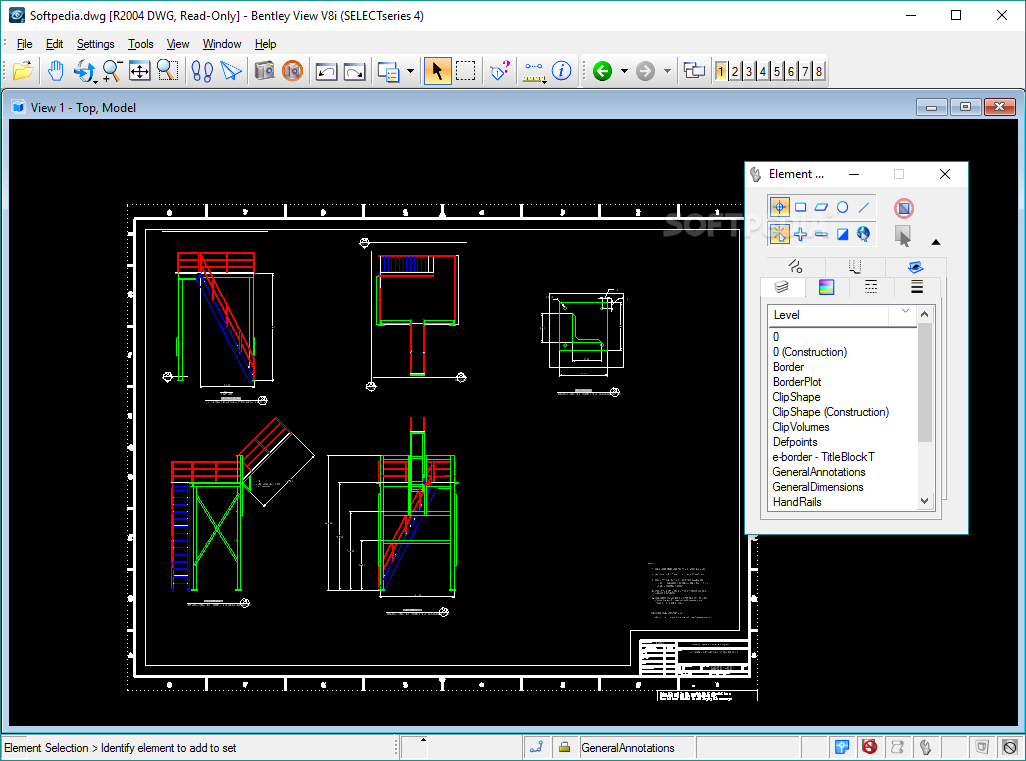Rocscience Slide Crack

Easy to use, reliable 2D and 3D geotechnical software designed for civil engineering and mining.
Oct 30, 2012 - Slope models can be imported / exported between Slide and Phase2 allowing easy comparison of limit equilibrium. Rocscience Phase2 Tunnel Design Software (v8.014 X64). Crack http://depositfiles.com/files/9ezekki6p. Rocscience Slide v7.0 Slide is the most comprehensive slope stability analysis software available, complete with finite element groundwater seepage analysis, rapid drawdown, sensitivity and probabilistic analysis, and support design. Slide Rocscience Serial Numbers. Convert Slide Rocscience trail version to full software.
Programs for Comprehensive
Slope Stability
From quick 2D analysis to complex 3D modeling, we offer the most extensive suite of tools for the analysis of soil and rock slopes.
Software Engineered for Excavation
Model virtually any type of underground or surface excavation, and analyze stress, groundwater flow, and design supports with ease.
Tools to Simplify
Geotechnical Analysis
Pack your toolkit with best-in-class programs for niche applications like soil settlement, stereographic and kinematic analysis, and pile analysis.
Find Your Fit: Flexible Pricing
Whether your company has 1 or 1,000 employees, there’s a plan that suits your needs. Learn about our purchase and leasing options, Maintenance Plan, and Personal versus Flexible licenses with our handy pricing tool.
News & Events
See what's new in Rocscience software. Read one of our RocNews articles, see our upcoming conferences, or register for a coming workshop.
News & EventsIf your model includes a Tension Crack boundary, then the water level in the Tension Crack zone can be specified with the Define Tension Crack option in the toolbar or the Properties menu.
The water level in a Tension Crack is very important to the stability analysis, because the additional hydrostatic force which can be exerted by water in a tension crack, can significantly lower the factor of safety of slip surfaces which intersect the Tension Crack zone. The unit weight of the water in the Tension Crack zone is used to calculate the hydrostatic force applied by water in the Tension Crack. This unit weight is determined from the Pore Fluid Unit Weight entered in the Project Settings dialog.
A Tension Crack boundary can be created in two ways:
Manually with the Add Tension Crack option in the Boundaries menu.
Automatically, by selecting the Create Tension Crack if failure surface .. checkbox in the Tension Crack Properties dialog (see below for details).
Tension Crack Water Level

Tamil audio songs. There are several different options for defining the water level in a Tension Crack.
Dry
A completely dry Tension Crack zone. No additional hydrostatic forces will act on the slip surface.
Filled
A completely water-filled Tension Crack zone. This is the worst case scenario, and will exert the maximum hydrostatic force on the slip surface. When you initially add a Tension Crack boundary to a model, the Filled option is the default setting which will automatically be in effect.
Percent Filled
A percentage from 0 to 100 can be specified. This percentage defines the height of water in the Tension Crack, along any vertical line from the Tension Crack boundary to the ground surface. Note that 0 percent is equivalent to the Dry option, and 100 percent is equivalent to the Filled option.
Filled Below Elevation
This option allows you to enter a value of Elevation defining the water level in the Tension Crack zone. NOTE that the Elevation is the absolute value (i.e. y-coordinate) of the water level. It is NOT the relative depth from the bottom of the Tension Crack boundary. Use the Filled to Depth option if you want to specify the water level as a relative value.
The value of Elevation should be somewhere between the minimum y-coordinate of the Tension Crack boundary, and the maximum y-coordinate of the slope above the Tension Crack zone. The Elevation defines a constant, horizontal water level within the Tension Crack zone.
Filled to Depth
This option allows you to enter a value of Depth. This defines the level of water in the Tension Crack zone, relative to the position of the Tension Crack boundary.
Use Water Table / Use Piezometric Line
If your model includes a Water Table or Piezometric Lines, then the water level in the Tension Crack zone can be automatically defined by the location of the Water Table, or a Piezometric Line. The Tension Crack zone will be assumed to be full of water, between the Tension Crack boundary and the Water Table or Piezometric Line, if the Water Table or Piezometric Line is drawn through the Tension Crack zone.
Rocscience Slide Cracking
Display of Water Level
When you specify a water level in a Tension Crack zone, the actual level of water will be indicated by the blue / gray shading of the vertical line pattern which is used to highlight the Tension Crack zone on the model.
When the Tension Crack zone is Dry, the vertical line pattern will be entirely gray.
When the Tension Crack zone is Filled, the vertical line pattern will be entirely blue.
When an intermediate water level is specified, the actual water level will be indicated by the height of the blue lines of the vertical line pattern. Gray lines will be shown above the water level.
Rocscience Slide Cracks
Create Tension Crack when failure surface is near vertical
Rocscience Slide 7.0
This option will automatically create a tension crack if a failure surface is near vertical. If the checkbox is selected, a user-defined angle from vertical can be specified. If the base angle of a failure surface exceeds this limit, then a tension crack will automatically be created for the slip surface at that location. Note that this option applies to individual slip surfaces, so the tension crack location may be different for each slip surface.